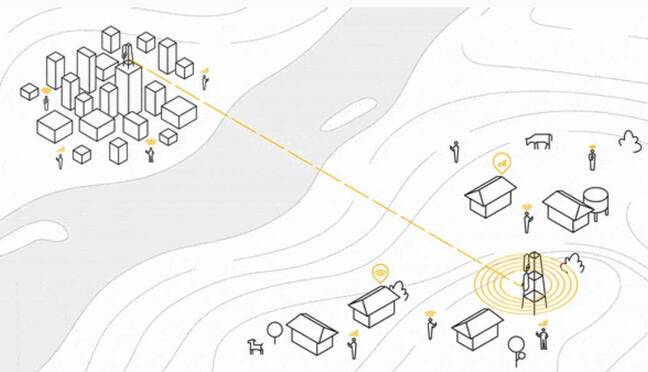Forget That Loon's Balloon Burst, We Just Fired 700TB Of Laser Broadband Between Two Cities, Says Google
Engineers at Google’s technology moonshot lab X say they used lasers to beam 700TB of internet traffic between two cities separated by the Congo River.
The capitals of the Republic of the Congo and the Democratic Republic of Congo, Brazzaville and Kinshasa, respectively, are only 4.8 km (about three miles) apart. The denizens of Kinshasa have to pay five times more than their neighbors in Brazzaville for broadband connectivity, though. That's apparently because the fiber backbone to Kinshasa has to route more than 400 km (250 miles) around the river – no one wanted to put the cable through it.
There's a shorter route for data to take between the cities. Instead of transmitting the information as light through networks of cables, it can be directly beamed over the river by laser.
In an effort dubbed Project Taara, X built two terminals, one in Brazzaville and another in Kinshasa, to transmit and receive data encoded in beams of laser light.
“In the same way traditional fibre uses light to carry data through cables in the ground, Taara’s wireless optical communication links use very narrow, invisible beams of light to deliver fiber-like speeds,” Baris Erkmen, Director of Engineering for Taara, explained today.
“To create a link, Taara’s terminals search for each other, detect the other’s beam of light, and lock-in like a handshake to create a high-bandwidth connection.”
- Catch of the day... for Google, anyway: Transatlantic Cornwall cable hauled ashore
- Bringing gigabit internet to Rural America requires equitable spectrum access, claims industry body
- Two arrested in Congo after Google Loon mobe balloon meets terra firma more than 1,000km from operating area
- Record-breaking Aussie boffins send 44.2 terabits a second screaming down 75km of fiber from single chip
About 700TB of data was exchanged over 20 days at speeds of up to 20 Gbps, with 99.9 per cent availability, with the help of Econet – the multinational telecoms giant, not the old Acorn networking system. The aim of the setup was to relay broadband internet traffic between the cities more as a test of the equipment than anything else.
A lot of effort went into tracking and pointing the light beam at a sensor a few kilometres away, and mitigating the effects of poor weather, interference from animals, and the like.
X has experimented with wireless optical communication techniques using lasers in various projects over the years, including from high-altitude balloons in the now-defunct unit Loon. In the past, it was more difficult to maintain bandwidth connections over large distances. Small disturbances in weather conditions, fog, or even birds flying across the laser beams was enough to interrupt internet service.
Erkmen said that the latest terminals installed in the Republic of the Congo and the Democratic Republic of Congo, however, have improved. They’re able to automatically adapt and can swivel their internal mirrors or direct their sensors to adjust to changing conditions in order maintain a direct line-of-sight connection with each other.
“Imagine pointing a light beam the width of a chopstick accurately enough to hit a 5-centimeter target (about the size of a US quarter) that's ten kilometers away; that’s how accurate the signal needs to be to be strong and reliable,” he said.
X has previously tested its wireless optical communications technology in India and Kenya too. The Register has asked X for more information. ®
From Chip War To Cloud War: The Next Frontier In Global Tech Competition
The global chip war, characterized by intense competition among nations and corporations for supremacy in semiconductor ... Read more
The High Stakes Of Tech Regulation: Security Risks And Market Dynamics
The influence of tech giants in the global economy continues to grow, raising crucial questions about how to balance sec... Read more
The Tyranny Of Instagram Interiors: Why It's Time To Break Free From Algorithm-Driven Aesthetics
Instagram has become a dominant force in shaping interior design trends, offering a seemingly endless stream of inspirat... Read more
The Data Crunch In AI: Strategies For Sustainability
Exploring solutions to the imminent exhaustion of internet data for AI training.As the artificial intelligence (AI) indu... Read more
Google Abandons Four-Year Effort To Remove Cookies From Chrome Browser
After four years of dedicated effort, Google has decided to abandon its plan to remove third-party cookies from its Chro... Read more
LinkedIn Embraces AI And Gamification To Drive User Engagement And Revenue
In an effort to tackle slowing revenue growth and enhance user engagement, LinkedIn is turning to artificial intelligenc... Read more


